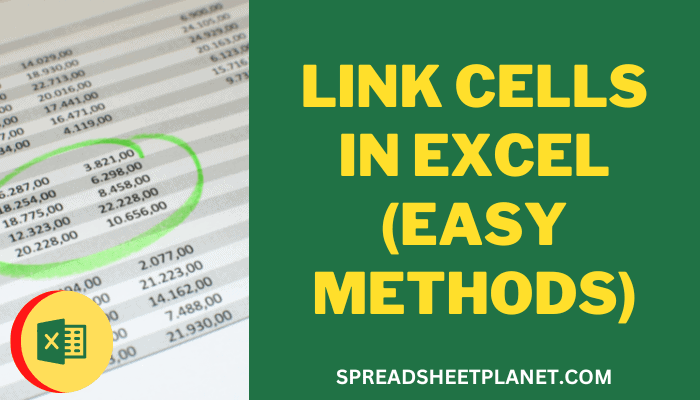3 Simple Ways to Add Cells Across Excel Sheets

If you've ever worked with extensive Excel spreadsheets, you understand how useful it can be to manage data across multiple sheets. Combining data from different sheets can streamline your analysis and reporting. Here are three straightforward methods to add cells across Excel sheets, making your work more efficient and organized.
Method 1: Using External References

External references in Excel allow you to refer to data in other workbooks or sheets. Here’s how to do it:
- Open Excel and go to the sheet where you want to add the cells from another sheet.
- Enter the formula in the cell where you want the result. For example, to add a cell from ‘Sheet2’ to the active cell in ‘Sheet1’, you would type:
=A1 + Sheet2!A1
- Press Enter. Excel will display the sum of the two cells.
- If you want to add more than one cell, you can continue the formula like:
=A1 + Sheet2!A1 + Sheet3!A1
This method is particularly useful when you need to link data between different workbooks or sheets within the same workbook.
📘 Note: Ensure the external references point to the correct file location if you move the Excel file or change its name, as broken links can occur.
Method 2: 3D References

3D references are great for summing across multiple sheets in a workbook:
- Navigate to the sheet where you want the sum to appear.
- Type in the formula bar:
=SUM(Sheet1:Sheet3!A1)
This formula will sum the values in cell A1 across Sheets 1, 2, and 3. - Hit Enter. The cell will now show the total sum of the specified cell across the sheets.
3D references are especially handy when dealing with financial or analytical models where the structure of data remains consistent across multiple sheets.
📘 Note: If you insert or delete a sheet between the referenced sheets, the 3D formula will automatically adjust to include or exclude the new sheet.
Method 3: Consolidate Function

Excel’s Consolidate function is perfect for summarizing data from multiple sheets into one:
- Select the cell where you want the consolidated data to begin.
- Go to the Data tab on the Ribbon, then click Consolidate in the Data Tools group.
- Choose the function you want to use (e.g., Sum, Average) from the Function dropdown.
- Under Reference, click each range on each sheet you want to consolidate. Use Add to include more ranges.
- Choose how you want to link the data (Create links to source data or Don’t create links).
- Click OK. Excel will consolidate the data based on the function selected.
| Pros | Cons |
|---|---|
| Can handle multiple ranges and sheets at once | Less flexible for dynamic or frequently changing data |
| Offers different calculation options | Requires manual updating if source data changes |

📘 Note: When using Consolidate, consider how you’ll update the data if the source sheets change; linked data can be helpful, but it will not automatically update.
By using these three methods, you can significantly enhance how you handle and analyze data in Excel across multiple sheets. Each method has its strengths:
- External references are best for linking single or multiple cells across sheets or workbooks.
- 3D references excel (pun intended) at summing the same cell across multiple sheets, perfect for reports.
- The Consolidate function is ideal for summarizing data from different sheets into a single location, offering versatility in how the data is combined.
Choosing the right method depends on your specific needs, the structure of your data, and how frequently you'll need to update the information. With a little practice, you'll find that these techniques not only save time but also reduce errors by automating part of your data aggregation process.
What if my sheets are in different Excel files?

+
You can still use external references by specifying the workbook name in the formula, like ‘=[WorkbookName.xlsx]SheetName!A1’. Ensure the files are saved in the same location or use a network drive if working collaboratively.
How can I automatically update the consolidated data?

+
While the Consolidate function does not automatically update, you can use external or 3D references to keep your data up-to-date. Another method involves setting up a VBA macro to refresh the data periodically.
Can I use these methods in Google Sheets?

+
Yes, Google Sheets supports similar functionality with slight variations in syntax. For instance, you can use IMPORTRANGE for external references and QUERY or SUMIF for consolidation.
These methods for adding cells across Excel sheets not only enhance your productivity but also ensure that your data management tasks are carried out with precision and ease. Whether you’re dealing with financial reports, inventory control, or any multi-sheet analysis, these tools will help you manage your spreadsheets more effectively.